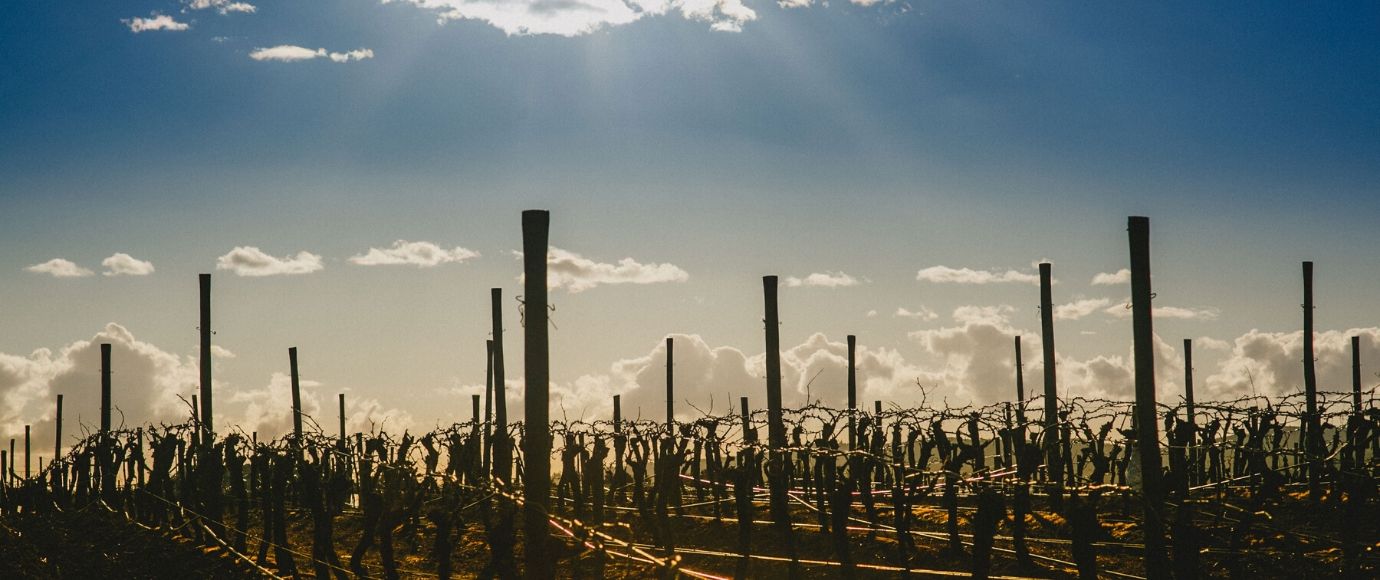Viniculture: Classic types of Plantings

In viticulture, there are different types of systems for training the growth of the vines, because the plant is a climber that needs a system of support or trellising. The method chosen for a vineyard can vary according to the climate, the quality, and the quantity of grapes desired, as well as the irrigation system and the manner of harvesting, among other variables. There are 2 types of classic plantings, which we will explain in this article.
The training systems in viticulture
The training systems for growth can be unattached or with support. Among those with support, there are 2 classic systems: one is the head-trained and the other is vertically trained.
You might be interested: Heritage sites: Chilean wines.
Head Trained
This system is also known as cup or gobelet. It began when vines were first being cultivated, and currently is the most-used system in the world. It’s about a looser system that has no permanent system for training the vine.
While this style might be more economical, since it doesn’t require additional material like posts and wires for growth, it’s worth remembering that harvests cannot be done mechanically, and must be done by hand.
How should a head-trained system be started?
To start with this kind of planting, first you must decide if the head-training will be with 3 or 4 cordons. To do this, you must keep in mind that this is related to the quality of the grape, since with lower yields, the quality of the bunches improves.
The plant will grow in a bush form, since it supports itself, forming a varying number of cordons like a candelabra, and each cordon has one or two arms with two shoots.
What are the benefits of this shape? By being in a head shape, the bunches receive much less light, and the fruit is protected, meaning a much slower ripening that allows for the natural acidity of the grapes to be conserved.
Also, it reduces the space between the plants, due to the fact that large machinery is not used to work these vineyards.
You can read: What is terroir and why is it so important?
Vertically trained
This system is comprised of parallel rows of plants, placed with approximately 1.5 meters of space between the plants, which are then trained with different placements of wires, between 2 and 4, held in place with posts. The quantity of wires determines if the trellising will be high or low. Low vertical trellising is the ideal system for cool climates, because the vine remains closer to the ground, which emanates heat.
How should a vertically-trained system be started?
To start this kind of system, first the plants must be planted, and only the following year can the wires be placed. The distance between the plants and the wires will depend on the kind of pruning system adopted.
In each extreme of the rows, the vertical endposts are placed. They must be 2.5 meters long, be buried 1.2 meters deep, and ∫at an angle of 45–60º. The internal posts within the row must also be 2.5 meters long and be buried vertically 0.8 meters deep.
The first of the stakes must be placed 3.6 from the endpost, with 3 plants placed in between. The rest must be placed 7.2 meters apart, with 6 plants in between.
This system of planting has the advantage of being easy to harvest, making the harvest costs much lower, since the branches are more orderly thanks to the supports, and can therefore be harvested mechanically. Manual harvest is also easier, since the bunches are all at waist-height.
On the other hand, this system also means a large quantity of light, since it reaches the vines on one side in the morning, and the other side in the afternoon. So, it takes advantage of the space with a greater number of plants per square meter.




